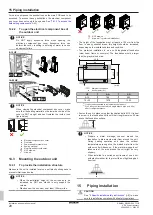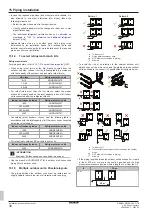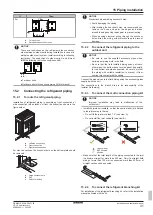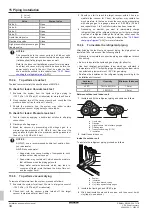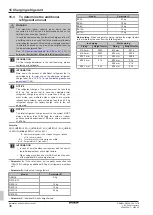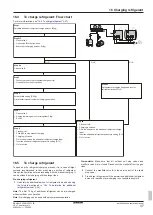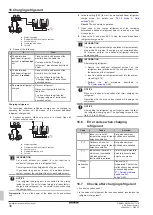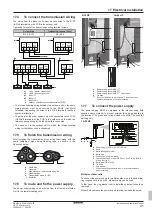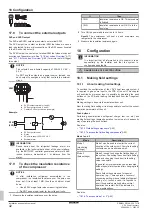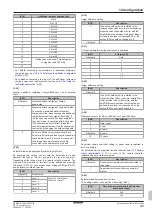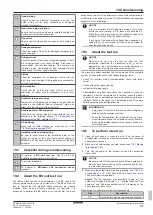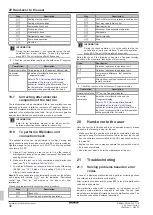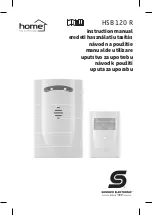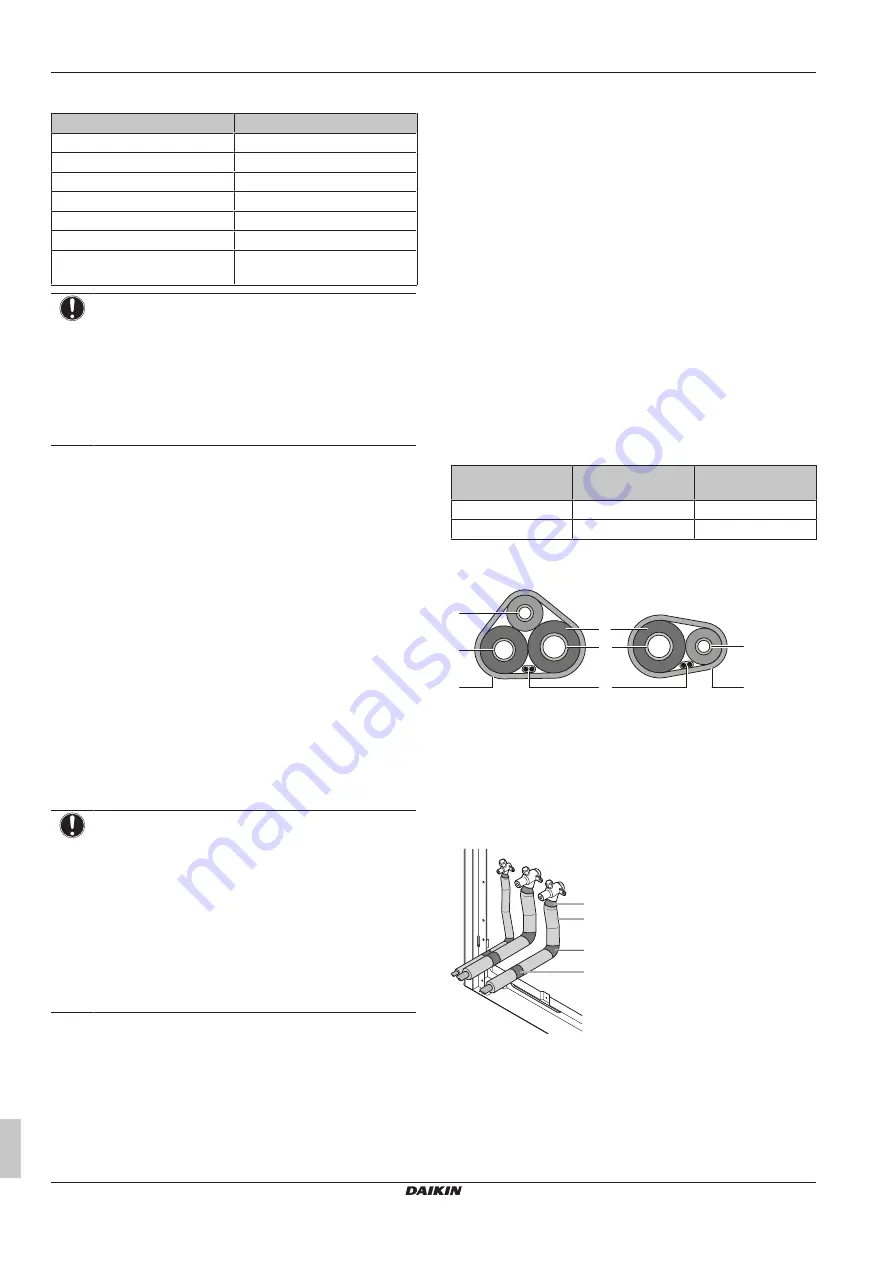
15 Piping installation
Installation and operation manual
34
REMA5+REYA8~20A7Y1B
VRV 5 heat recovery
4P684060-1 – 2022.02
C
Valve C
D
Valve D
Valve
State of valve
Valve A
Open
Valve B
Open
Valve C
Open
Valve D
Open
Liquid line stop valve
Close
Gas line stop valve
Close
High pressure/low pressure gas
line stop valve
Close
NOTICE
The connections to the indoor units and all indoor units
should also be leak and vacuum tested. Keep any possible
(field supplied) field piping valves open as well.
Refer to the indoor unit installation manual for more details.
Leak test and vacuum drying should be done before the
power supply is set to the unit. If not, see also the flow
chart earlier described in this chapter (see
checking the refrigerant piping"
15.3.4
To perform a leak test
The leak test must satisfy the specifications of EN378‑2.
To check for leaks: Vacuum leak test
1
Evacuate the system from the liquid and gas piping to
–100.7 kPa (–1.007 bar)(5 Torr absolute) for more than 2 hours.
2
Once reached, turn off the vacuum pump and check that the
pressure does not rise for at least 1 minute.
3
Should the pressure rise, the system may either contain
moisture (see vacuum drying below) or have leaks.
To check for leaks: Pressure leak test
1
Test for leaks by applying a bubble test solution to all piping
connections.
2
Discharge all nitrogen gas.
3
Break the vacuum by pressurising with nitrogen gas to a
minimum gauge pressure of 0.2 MPa (2 bar). Never set the
gauge pressure higher than the maximum working pressure of
the unit, i.e. 3.52 MPa (35,2 bar).
NOTICE
ALWAYS use a recommended bubble test solution from
your wholesaler.
NEVER use soap water:
▪ Soap water may cause cracking of components, such
as flare nuts or stop valve caps.
▪ Soap water may contain salt, which absorbs moisture
that will freeze when the piping gets cold.
▪ Soap water contains ammonia which may lead to
corrosion of flared joints (between the brass flare nut
and the copper flare).
15.3.5
To perform vacuum drying
To remove all moisture from the system, proceed as follows:
1
Evacuate the system for at least 2 hours to a target vacuum of
–100.7 kPa (–1.007 bar)(5 Torr absolute).
2
Check that, with the vacuum pump turned off, the target
vacuum is maintained for at least 1 hour.
3
Should you fail to reach the target vacuum within 2 hours or
maintain the vacuum for 1 hour, the system may contain too
much moisture. In that case, break the vacuum by pressurising
with nitrogen gas to a gauge pressure of 0.05 MPa (0.5 bar)
and repeat steps 1 to 3 until all moisture has been removed.
4
Depending on whether you want to immediately charge
refrigerant through the refrigerant charge port or first pre-charge
a portion of refrigerant through the liquid line, either open the
outdoor unit stop valves, or keep them closed. See
15.3.6
To insulate the refrigerant piping
After finishing the leak test and vacuum drying, the piping must be
insulated. Take into account the following points:
▪ Make sure to insulate the connection piping and refrigerant branch
kits entirely.
▪ Be sure to insulate the liquid and gas piping (for all units).
▪ Use heat resistant polyethylene foam which can withstand a
temperature of 70°C for liquid piping and polyethylene foam which
can withstand a temperature of 120°C for gas piping.
▪ Reinforce the insulation on the refrigerant piping according to the
installation environment.
Ambient
temperature
Humidity
Minimum thickness
≤30°C
75% to 80% RH
15 mm
>30°C
≥80% RH
20 mm
Between outdoor and indoor unit
1
Insulate and fix the refrigerant piping and cables as follows:
d
b
e
a
d
a
c
f
a
Liquid pipe
b
Gas pipe
c
High pressure / low pressure gas pipe
d
Finishing tape
e
Transmission wiring (F1/F2)
f
Insulation
2
Install the service cover.
Inside the outdoor unit
To insulate the refrigerant piping, proceed as follows:
b
a
c
d
a
Sealant
b
Insulation
c
Vinyl tape around curves
d
Vinyl tape against sharp edges
3
Insulate the liquid, gas and HP/LP pipe.
4
Wind heat insulation around the curves, and then cover it with
vinyl tape (c, see above).









